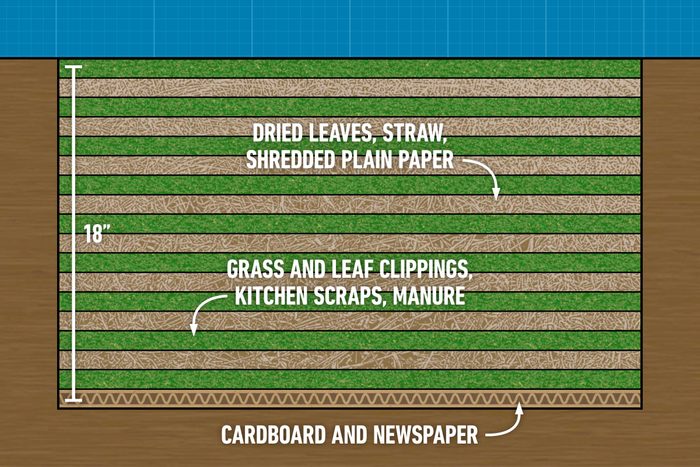I have six raised beds for growing vegetables and flowers, all started without dragging out a shovel or firing up a rototiller. I used a simpler, less back-breaking process that’s been called many things, including no-till gardening, mulch gardening, sheet composting and my favorite lasagna gardening.
What Is Lasagna Gardening?
It’s a method of preparing an area for planting by layering different types of organic material. It all gradually breaks down to produce a good soil for planting.
No-till, mulch and lasagna gardening and sheet composting are all variations on a theme. Ruth Stout seems to have started it with her 1955 book, How to Have a Green Thumb Without an Aching Back: A New Method of Mulch Gardening.
Pat Lanza termed it “lasagna gardening” in her 1998 book, Lasagna Gardening: A New Layering System for Bountiful Gardens: No Digging, No Tilling, No Weeding, No Kidding! And this year, Kate Flood called it “sheet composting” in her book, The Compost Coach.
Is Lasagna Gardening the Same as Lasagna Planting?
No. Lasagna planting is a method of planting bulbs, primarily.
Does Lasagna Gardening Work?
Yes. Just look at a local wooded lot. Mother Nature layers on leaves and other organic matter every year. Then a variety of creatures, from microscopic fungi and bacteria to easily identifiable worms, break it down to create a compost-rich soil.
The same thing happens when you layer organic material in a garden bed. It breaks down over time to become good soil for planting.
Lasagna Gardening Layers
There are three basic types of layers:
- Something to smother the grass and weeds: This is usually several sheets of plain or black-and-white white printed newspaper or cardboard. If you use cardboard, remove all tape, labels and staples, and only use the untreated kind. Avoid cardboard with a slick finish.
- Green organic matter, aka the nitrogen layer: Examples include untreated grass clippings, any other green leafy clippings, chopped-up kitchen scraps (no meats!) and animal manures.
- Brown organic matter, aka the carbon layer. Dried leaves, straw and, if available, shredded plain paper.
Starting a Lasagna Gardening Bed

Fall is the best time to prepare a garden bed using the lasagna method. It works in sunny and shady locations.
Once you’ve chosen the perfect spot, gather up material for your layers.
- If there’s grass growing in the area, set your mower to the lowest possible setting before cutting it. Remove any big weeds.
- Cover the area with cardboard or layers of newspaper, overlapping them so weeds don’t grow between them.
- Soak the cardboard or layers of newspapers thoroughly with water.
- Cover the cardboard/newspaper layer with an inch or so of green material (the nitrogen layer).
- Cover the nitrogen layer with brown material (the carbon layer), adding another inch or so. Moisten the bed again.
- Repeat, adding alternating layers of green and brown material.
For best decomposition, build up the layers to about 18 inches high. It may take several days or weeks to gather and spread each layer. Keep the bed moist, but not sopping wet.
How Long Does It Take for Lasagna Gardening to Decompose?
It can take up to six months before your bed is ready for planting, so you’ll need patience. You’ll know the bed is ready when you no longer see the different layers and it all looks like a good, rich compost, like on the ground in the woods.
Is Hugelkultur the Same Thing as Lasagna Gardening?
No, though hugelkultur and lasagna gardening create great soil from layers of organic matter.
Hugelkultur starts with a layer of wood, twigs and wood chips, topped with alternating layers of green and brown organic matter, then a few inches of topsoil. As the wood breaks down, it improves the soil. These types of beds tend to need less water.
Article source here: What Is Lasagna Gardening?


No comments:
Post a Comment